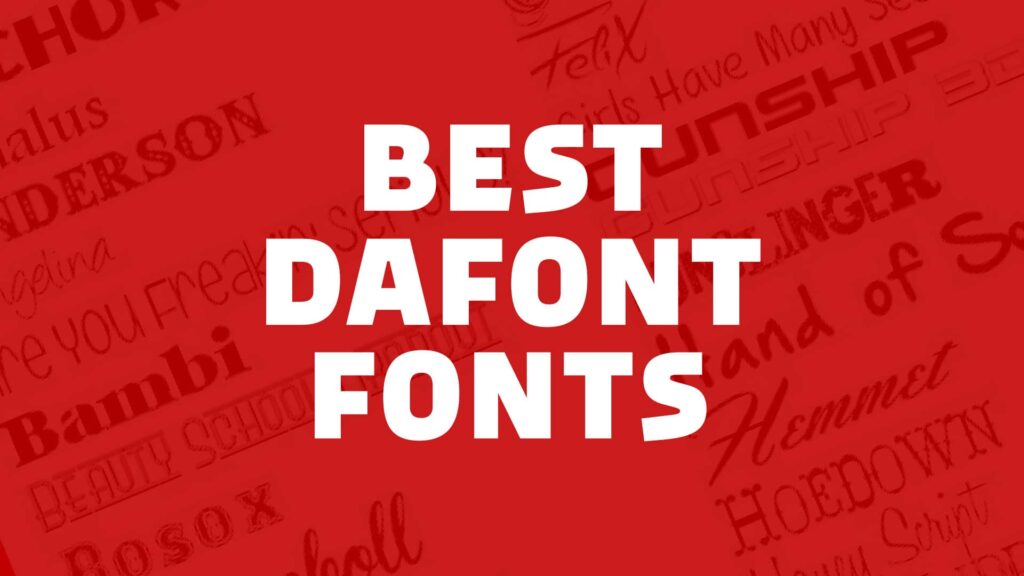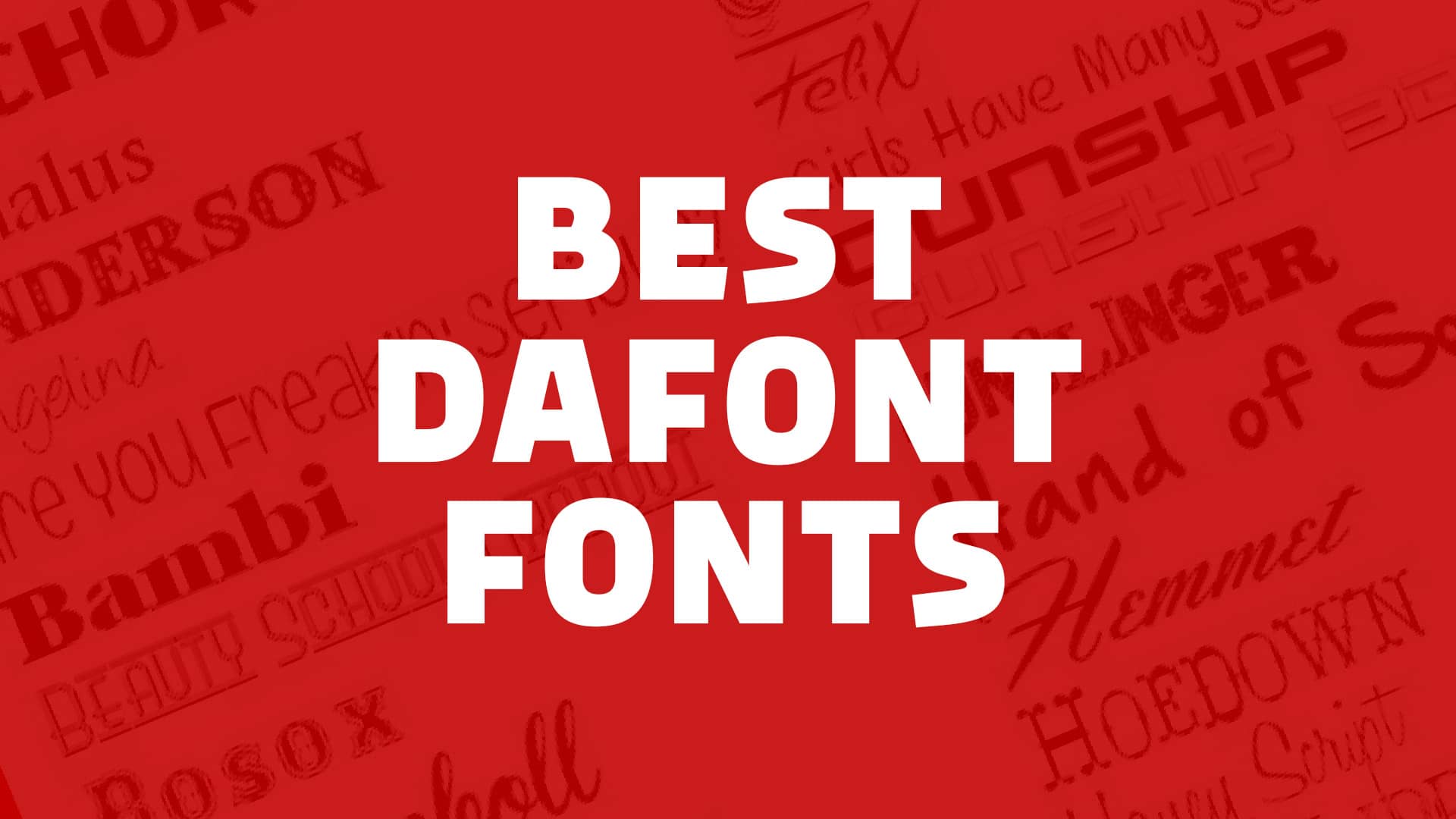
Dafont: A Comprehensive Guide to Free Fonts for Designers
In the world of design, typography plays a crucial role in conveying messages and creating visual appeal. While premium fonts offer unique and sophisticated options, many designers, especially those starting out or working on budget-conscious projects, turn to free font resources. Among these resources, Dafont stands out as a prominent and widely used platform. This article provides a comprehensive guide to Dafont, exploring its features, benefits, potential drawbacks, and offering tips for responsible usage.
What is Dafont?
Dafont is a website that offers a vast collection of downloadable fonts, primarily free for personal use. Founded in 2000, it has become a go-to resource for designers, hobbyists, and anyone looking to add a unique touch to their projects. The site boasts a user-friendly interface and a diverse range of font styles, making it easy to find the perfect typeface for any creative endeavor. Dafont categorizes fonts into various themes, such as fancy, foreign look, techno, gothic, basic, script, dingbats, and more, facilitating efficient browsing and discovery.
Key Features and Benefits of Using Dafont
- Extensive Font Library: Dafont‘s most significant strength lies in its massive collection of fonts. With thousands of options available, users can find fonts suitable for logos, posters, websites, and various other design applications.
- User-Friendly Interface: The website is designed with simplicity in mind. Its intuitive layout allows users to easily navigate through categories, search for specific fonts, and preview how text looks in different typefaces.
- Free for Personal Use: The majority of fonts on Dafont are free for personal use, making it an accessible resource for students, hobbyists, and designers working on non-commercial projects. This affordability is a major draw for many users.
- Font Preview Feature: Before downloading a font, users can preview how it will look with their desired text. This feature allows designers to experiment with different typefaces and ensure they choose the most suitable option for their project.
- Regular Updates: The Dafont library is constantly updated with new fonts, ensuring a fresh and diverse selection for users to explore. This continuous influx of new typefaces keeps the platform relevant and appealing.
Potential Drawbacks and Considerations
While Dafont offers numerous benefits, it’s essential to be aware of its potential drawbacks:
- Licensing Restrictions: The primary concern with Dafont is the licensing of its fonts. While many fonts are free for personal use, commercial use often requires a license from the font’s creator. It’s crucial to carefully review the license agreement for each font before using it in any commercial project to avoid copyright infringement.
- Font Quality: The quality of fonts on Dafont can vary significantly. Some fonts are professionally designed and meticulously crafted, while others may be poorly designed or incomplete. Designers should carefully evaluate the quality of each font before incorporating it into their work.
- Lack of Support: As a free resource, Dafont typically doesn’t offer technical support for its fonts. If users encounter issues with a particular font, they may need to troubleshoot the problem themselves or seek assistance from the font’s creator, if possible.
- Security Risks: While Dafont is generally considered safe, there’s always a potential risk of downloading malicious files from any website. Users should exercise caution and ensure their antivirus software is up-to-date before downloading fonts from Dafont or any other online resource.
Understanding Font Licensing on Dafont
Navigating font licensing on Dafont is crucial to avoid legal issues. Here’s a breakdown of common license types:
- Free for Personal Use: This is the most common license type on Dafont. It allows users to use the font for non-commercial projects, such as school assignments, personal blogs, or hobby projects.
- Free for Commercial Use: Some fonts are explicitly licensed for free commercial use, meaning they can be used in projects that generate revenue without requiring a separate license. However, it’s always advisable to double-check the license agreement to ensure compliance.
- Donationware: Donationware fonts are free to use, but the creator encourages users to make a donation if they find the font valuable. This is a way to support the designer and encourage them to continue creating high-quality fonts.
- Shareware: Shareware fonts are typically available for a limited trial period. After the trial period expires, users are required to purchase a license to continue using the font.
- Commercial License Required: For fonts that are not explicitly licensed for free commercial use, a commercial license must be purchased from the font’s creator. This license grants the user the right to use the font in projects that generate revenue.
It is imperative to always check the individual font license before using any Dafont font in a project, especially if it will be used commercially. Look for the “License” section on the font’s download page, which will detail the terms of use.
Tips for Using Dafont Responsibly
To ensure a positive and ethical experience when using Dafont, consider these tips:
- Always Check the License: Before using any font, carefully review the license agreement to understand the terms of use. Pay close attention to whether the font is free for personal use, commercial use, or requires a separate license.
- Support Font Creators: If you find a font that you love and use frequently, consider making a donation to the creator or purchasing a commercial license. This helps support their work and encourages them to continue creating high-quality fonts.
- Credit the Font Designer: When using a font, especially in a public project, consider giving credit to the font designer. This is a simple way to acknowledge their contribution and promote their work.
- Use High-Quality Fonts: Prioritize fonts that are well-designed and professionally crafted. Avoid fonts that are poorly designed or incomplete, as they can detract from the overall quality of your project.
- Scan Downloaded Files: Before installing a font, scan the downloaded file with your antivirus software to ensure it’s free from malware. This helps protect your computer from potential security threats.
- Be Mindful of Font Combinations: When using multiple fonts in a project, be mindful of how they complement each other. Choose fonts that have a harmonious relationship and enhance the overall visual appeal of your design.
Alternatives to Dafont
While Dafont is a popular choice, several alternative websites offer free and premium fonts. Some notable alternatives include:
- Google Fonts: A vast library of open-source fonts that are free for both personal and commercial use. [See also: Google Fonts Best Practices]
- Font Squirrel: Offers a curated selection of high-quality, free-for-commercial-use fonts.
- MyFonts: A premium font marketplace with a wide range of professionally designed typefaces.
- Adobe Fonts: A subscription-based service that provides access to a vast library of fonts for use in Adobe Creative Cloud applications.
- Creative Market: A marketplace for design assets, including fonts, graphics, and templates.
The Future of Free Font Resources
The landscape of free font resources is constantly evolving. As technology advances and design trends shift, new platforms and font styles emerge. While Dafont remains a significant player in the industry, it’s essential to stay informed about alternative resources and emerging trends. The future of free font resources is likely to be characterized by increased accessibility, improved quality, and a greater emphasis on ethical usage.
Conclusion
Dafont is a valuable resource for designers seeking free fonts for personal projects. Its extensive library, user-friendly interface, and font preview feature make it an attractive option for those on a budget. However, it’s crucial to be aware of the potential drawbacks, such as licensing restrictions and varying font quality. By understanding font licensing, using Dafont responsibly, and exploring alternative resources, designers can leverage the power of typography to create visually stunning and impactful projects. Always remember to prioritize ethical practices and respect the intellectual property of font creators.

